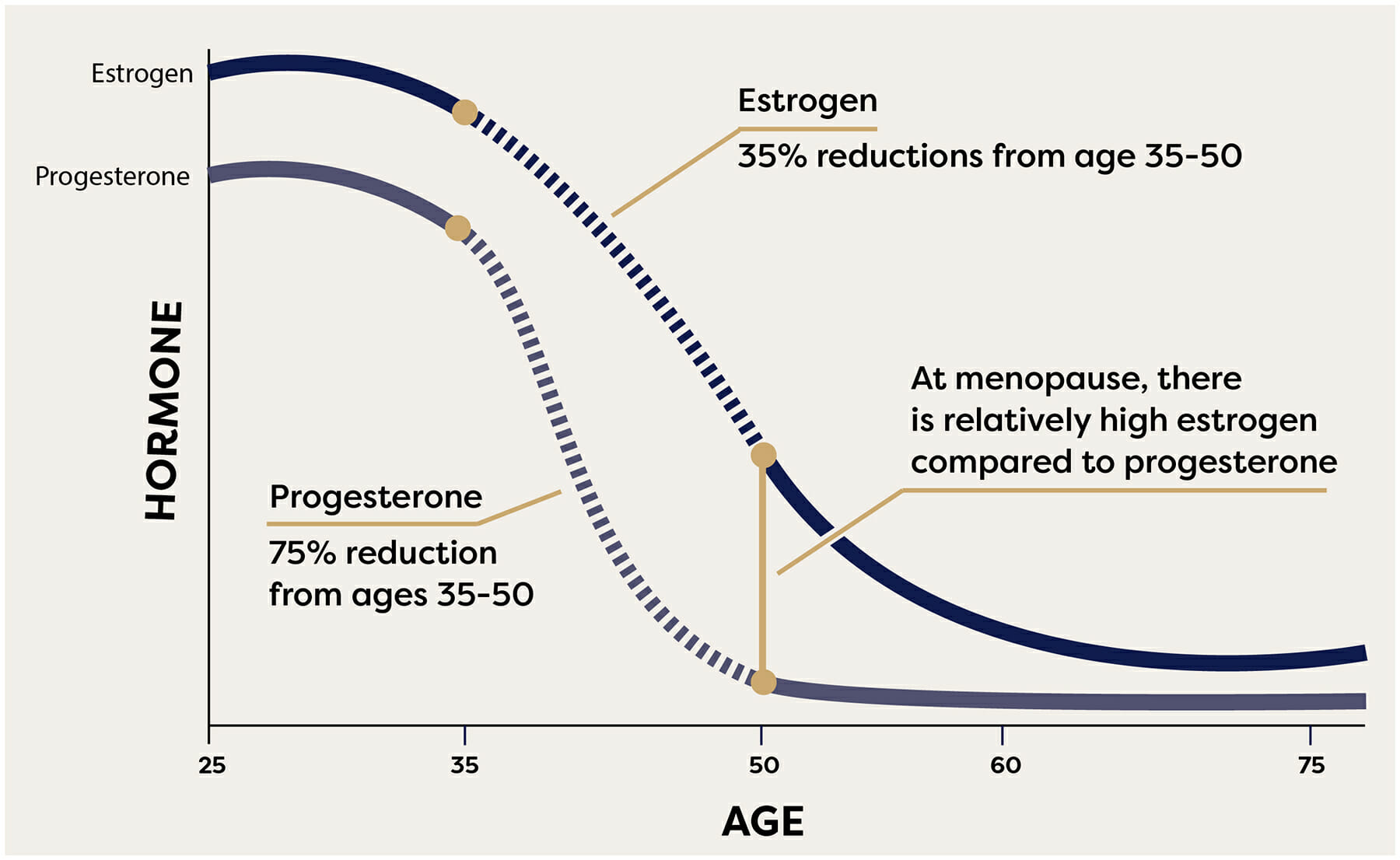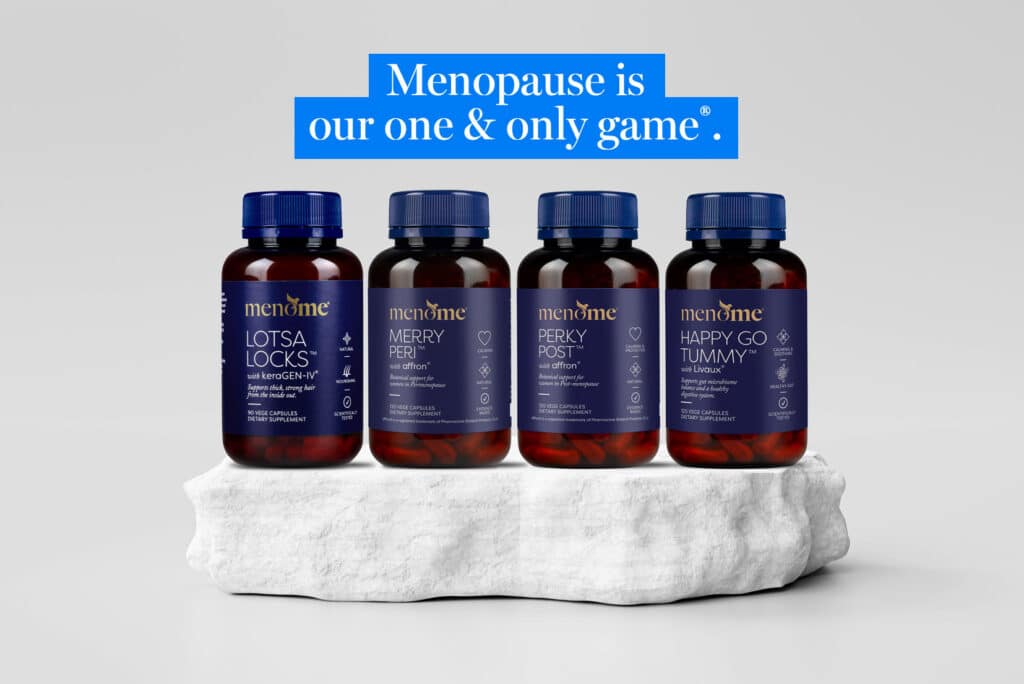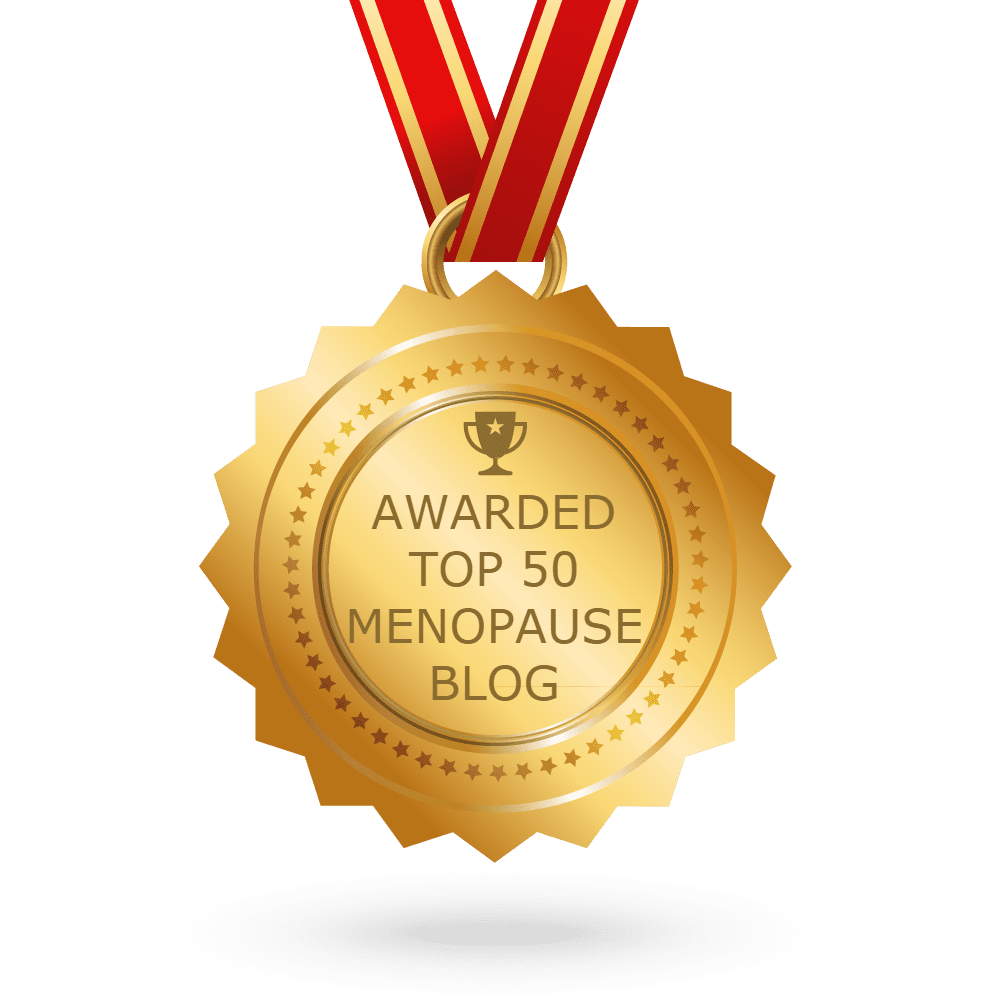What’s Estrogen Dominance & 18 Reasons You Should Care

Estrogen dominance. Have you heard of it?
If you answered yes, it’s not surprising because estrogen dominance (ED) is a bit of a buzzword. And while buzzwords become familiar the reality is that sometimes we don’t grasp what they actually mean.
Nevertheless, estrogen dominance can be particularly common in perimenopause.
Simply put…
To clarify, estrogen dominance refers to a ratio imbalance of estrogen and progesterone.
Basically, estrogen dominance means estrogen levels are high in relation to progesterone.
Therefore, even if you are in post-menopause you can still be estrogen dominant because it hinges on the RATIO.
Another key point is that progesterone levels decline around age 35 whereas estrogen doesn’t begin diminishing until later. As a result, estrogen and progesterone often become out-of-kilter in perimenopause.
Indeed, progesterone is low and estrogen levels seesaw. Subsequently, when the seesaw is on an upward swing estrogen dominance can occur.

Estrogen dominance. An undiagnosed epidemic?
Of course, these hormonal highs and lows are part of the menopause transition. However, they can be magnified by the number of xenoestrogens in our lifestyles.
Xenoestrogens imitate estrogen and are found in modern diets, water, plastics and environmental pollutants. Furthermore, many items like household cleaners and personal care products such as skincare and makeup contain them.

Significantly, several functional medicine practitioners* believe estrogen dominance is one of the most undiagnosed epidemics globally.
9 symptoms of estrogen dominance
Estrogen dominance has been linked to:
- bloating
- headaches/migraines
- fibroids
- endometriosis
- fibrocystic breasts
- mood swings
- weight gain
- allergies
- accentuated menopausal symptoms
Additionally, excess estrogen has been associated with:
- thyroid dysfunction
- autoimmune disease
- hormone-dependent cancers such as breast, ovarian and uterine
18 possible signs of estrogen dominance
- Anxiety
- Bloating
- Heavy periods
- Diminished libido
- Fibroids
- Cellulite
- Breast swelling/tenderness
- Breast lumps
- Mood swings and irritability
- Headaches
- Bloating
- Depression
- Crying spells
- Trouble sleeping
- Fatigue
- Spider or varicose veins
- Hair thinning/loss
- Weight gain

Liver health & estrogen dominance
Excess estrogen is usually filtered out of our bodies via the liver. To combat estrogen dominance, it’s important to realise that we need to prioritise liver health. To that end, the liver has two detoxification pathways. However, for many of us they’re not working optimally. Dr Libby explains it so well:
“High levels of estrogen are usually the result of the liver recycling estrogen, rather than detoxifying it. The liver has to change estrogen before it can be elimimated. But if the biochemical pathways for estrogen detoxification are congested and are too busy dealing with other ‘liver-loaders’, estrogen gets recycled rather than detoxified,” she says.
13 ways to help estrogen dominance

- Take Merry Peri® or Perky Post® These are evidence-backed and formulated to help support hormonal shifts.
- Use a water filter.
- Eat whole foods with an emphasis on plants. Since some are classified as phytoestrogens they may help balance estrogen naturally. Get your free phytoestrogen list here.
- Load up on the cruciferous vegetable family daily because they support the liver. Cruciferous veggies include broccoli, cauliflower, cabbage, kale, bok choy and brussel sprouts.
- Go for five to nine servings of fresh fruit and vegetables per day.
- Get educated. In order to do that, read up on the Environmental Working Groups Dirty Dozen and Clean Fifteen.
- Avoid processed, refined foods.
- Put the brakes on ‘liver-loading’ alcohol and caffeine.
- Get rid of plastics, instead use glass or stainless steel.
- Make it a priority to reduce your stress levels to support your adrenal and thyroid glands. They’re also affected by estrogen overload.
- Reduce your exposure to xenoestrogens by using natural household cleaners, makeup, skincare and body care.
- Focus on supporting healthy gut flora. Try Happy Go Tummy® which is synbiotic meaning it’s a combination of prebiotic and probiotic.
- Ensure you poop regularly by eating oodles of fibre.
Knowledge Nugget:
3 Types of Estrogens
Estrogens are actually a group of hormones. The most well studied are:
- Estrone (E1) – mainly stored in fat and muscle tissue. A weaker estrogen commonly found in post-menopausal women.
- Estradiol (E2) – the strongest type of estrogen and generally the main player in women of childbearing age. Sometimes labelled ‘aggressive’ it’s been linked to female disorders such as fibroids and other gynaecological conditions.
- Estriol (E3) – the weakest estrogen – pregnancy is the only time we have a lot of it.
In conclusion
All in all, one of the most important things you can do is listen to your body. After all, when things are out of whack it can manifest as symptoms. Your job is to listen to them. 🙂
And of course, if we can be of help and support to you please don’t hesitate to reach out.
Disclaimer:
Our articles are a guideline only. Any signs and symptoms you are experiencing could be due to a number of reasons. For this reason, this should not take the place of medical advice. If you’re experiencing ongoing signs please see a functional medicine practitioner.










